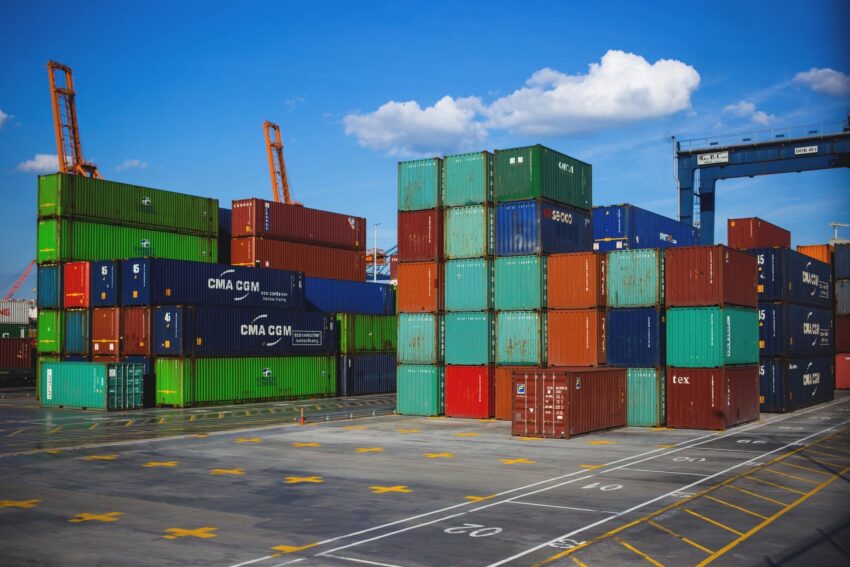Transportation and logistics are integral components of the modern-day business world. Whether you’re running a small business or managing global supply chains, having efficient transportation and logistics processes in place is essential for success.
From getting goods to customers quickly to reducing inventory costs, effectively managing transportation and logistics can make or break a company’s bottom line. But with ever-changing regulations and customer demands, staying on top of the latest industry trends can be difficult. In this article, we’ll explore what transportation and logistics entail, discuss current trends in the field, and offer tips on improving your own operations.

Work With A Freight Company
When it comes to moving large, bulky, or heavy items, you may need to consider working with a freight company. A reliable, experienced freight company can provide the services you need to get your products from one place to another safely. There are many freight companies in Brisbane or any other place. When selecting a freight carrier for your needs, there are several important factors to consider. First and foremost, you should determine the size and weight of the items you need to transport. This will help to ensure that the carrier can handle them safely and effectively. You should also ask about their experience with similar shipments, as well as their safety record and customer service policies.
Once you have determined a reliable freight carrier for your needs, they can help you with a variety of transportation and logistics solutions. This can include door-to-door delivery, storage, express shipping, and more. With their expertise in the area, they can also help you find cost-effective solutions to get your products from one place to another quickly and safely.
Invest In Good Software
Having the right software in place is essential for any transportation and logistics operation. The right software can help you automate processes, monitor shipments in real-time, and ensure your delivery deadlines are met. There are a variety of different types of software available to help manage your logistics operations. You should consider the size and scope of your business when selecting the right software for your needs.
For small businesses, cloud-based solutions can be a great way to get started quickly without the need for large upfront investments. These solutions are often available on a pay-as-you-go basis and offer scalability as your business grows. For larger companies, an enterprise resource planning (ERP) system can provide comprehensive solutions for managing all aspects of your transportation and logistics operations. No matter the size of your business, investing in quality software can help you stay organized and efficient when it comes to transportation and logistics.

Stay Up-To-Date On Regulations
The world of transportation and logistics is ever-changing, with new regulations coming into effect regularly. Staying up-to-date on these regulations is essential for ensuring compliance with safety and environmental requirements, as well as avoiding potential fines or penalties. It’s also important to stay informed of any new technological developments in the field that could help improve your operations. Keeping abreast of industry news can help you make informed decisions about your operations and stay ahead of the competition.
Invest In Good Hardware
Having the right hardware for your transportation and logistics operations is also essential for success. This includes things like vehicles, computers, phones, scanners, and other pieces of equipment that are necessary for efficient operations. Investing in quality equipment can help ensure that your employees have what they need to get the job done. Furthermore, having reliable equipment can save you time, money, and stress in the long run. Hardware, software, and personnel all work together to form a strong transportation and logistics system. Investing in quality solutions at each of these three points can help ensure your operations run smoothly and efficiently.
Employee Training
When it comes to transportation and logistics, employee training is essential. Without well-trained employees, a business will suffer from costly inefficiencies, customer service problems, and safety issues. The ideal training program should include instruction on problem-solving, customer service skills, workplace safety measures, and industry-specific topics. To ensure that employees are receiving the most up-to-date instruction on transportation and logistics, companies should offer ongoing training. This can include webinars, in-person seminars, and hands-on workshops. Companies should also use a variety of learning formats to reach all types of learners. For example, visual aids such as videos and infographics can help some learners understand complex concepts more easily.
When creating a training program for transportation and logistics, it’s important to consider the roles of each employee. For instance, warehouse clerks might need instruction on inventory management tools while drivers might require in-depth knowledge of vehicle safety protocols. Companies should also keep their training curriculum up-to-date with new technologies, industry trends, and best practices.
Analyze Your Processes
Conducting regular reviews of your transportation and logistics processes can help you identify areas for improvement. This includes analyzing data such as delivery times, customer service responses, and the number of orders fulfilled. You should also look at how efficiently resources are being used and if there’s any opportunity to streamline operations. By evaluating these processes, you can pinpoint areas where changes could be made to save money and improve the overall efficiency of your business.
When analyzing your processes, it’s important to factor in customer feedback. This can provide insight into how your business is performing and help you identify areas where customers may be experiencing frustrations or delays. Paying attention to customer feedback will ensure that the right changes are being made to improve the quality of their experience with your service. It’s also important to look at the latest technological advances in transportation and logistics to determine which could be beneficial for your business. Technology can help automate processes, reduce costs, and improve overall efficiency.
In conclusion, staying up-to-date on industry news, investing in reliable equipment and personnel, and analyzing your processes can all help businesses maximize their transportation and logistics operations. By implementing these strategies, companies can ensure that they’re providing the best possible service to their customers. With the right guidance and support, businesses can maximize their transportation and logistics operations for maximum efficiency.


